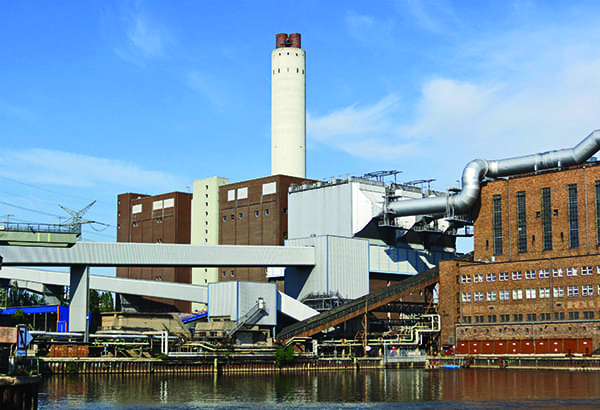Storing Energy in Salt—Vattenfall Testing Technology at Berlin Plant
Credit to Author: POWER| Date: Sat, 01 Jun 2019 00:00:00 +0000
Swedish power company Vattenfall is testing a technology that stores energy in salt, with a goal of proving whether the process would be useful for storage of renewable energy such as from wind and solar farms. The pilot project, commissioned April 11 at the Reuter thermal power plant in Berlin (Figure 1), is being conducted with Swedish company SaltX Technology, which has said its system has been proven to store up to 10 times more energy in salt than in water, and for longer periods. SaltX’s technology uses salt crystals coated in a nano material, which is heated with electricity, with the heat released when the crystals are discharged.
 |
|
1. Vattenfall is rebuilding the Reuter thermal power plant, preparing to retire its coal-fired unit and adding a power-to-heat facility. Courtesy: Vattenfall |
SaltX on its website calls the system “Thermo-chemical energy storage,” saying the energy “is stored chemically, by separating salt from water, and then released by combining them again. The technology allows thermal energy to be stored and used hours, days, or months later,” for both small- and large-scale projects. The company says, “SaltX Thermo chemical energy storage can be charged with both electricity and heat and then be released as heat up to 500C (930F).”
The project at Reuter has a total storage capacity of 10 MWh and is the first test of the system on an industrial scale. Sandra Kühberger, head of media relations and content for Vattenfall in Germany, told POWER: “Data should be collected in the coming months to better understand the processes. After the pilot phase, [at the] end of summer, the gathered data will be evaluated.” Markus Witt of Vattenfall, who is responsible for the project, said, “Some questions are how large amounts of salt can be used, how quickly the storage medium reacts, and how the process can be controlled.”
Vattenfall and SaltX Technology initiated their collaboration in 2017, with the pilot plant installed over several months at Reuter. SaltX Technology says the nano-coated salt “is all-natural, very scalable and prevents corrosion. The salt has a good volumetric energy density and the nano-coating enables a long life to/for a low-cost material.” SaltX says the technology allows what it calls the “salt battery” to be charged thousands of times, with energy stored for weeks or months without loss.
“The energy sector is changing quickly, and we globally see an enormous need for energy storage. Germany is a country at the forefront of this development and we are proud to have Vattenfall as a partner. We are eager to launch our energy storage solution commercially as quickly as possible,” said Harald Bauer, CEO of SaltX Technology, in a statement.
Vattenfall said the project will run until the end of summer, with data and other results made available at the end of 2019. Vattenfall said the salt storage project is part of the company’s rebuilding of the Reuter plant, where Vattenfall said it will begin operation of Europe’s largest power-to-heat facility (p2h) later this year. That project is based on storage of hot water.
Kühberger told POWER: “By 2020, the p2h unit will provide district heating from electricity for up to 30,000 households. Vattenfall is investing almost €100 million [about $112 million] in the next two years. After the commissioning of all heat boilers in the project, the [coal-fired] unit C of Reuter can be decommissioned as planned from the heating season 2019/2020 on.”
Vattenfall is retiring Reuter C coal-fired unit as part of its plan to phase out coal-fueled generation in Berlin by 2030. Reuter today is a 160-MW combined heat and power (CHP) plant that first operated as a coal-fired plant in 1930 in the Spandau district of Berlin. The plant, like many others in the region, was demolished after World War II, but was rebuilt starting in 1948. It was converted to a CHP plant in 1956. The plant includes a flue gas scrubber, with the turbine operated by steam from a nearby waste incineration plant.
—Darrell Proctor is a POWER associate editor (@DarrellProctor1, @POWERmagazine).
The post Storing Energy in Salt—Vattenfall Testing Technology at Berlin Plant appeared first on POWER Magazine.